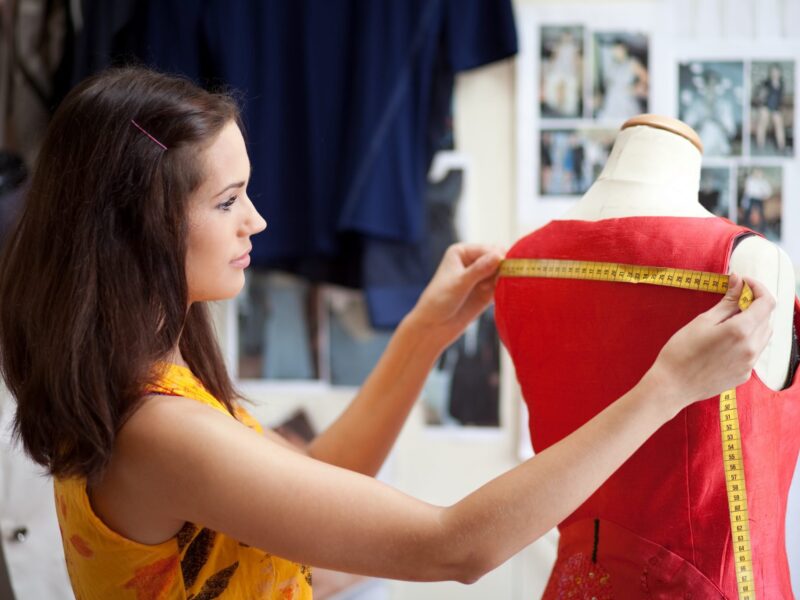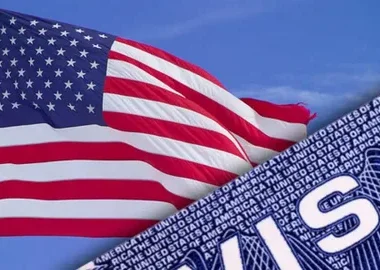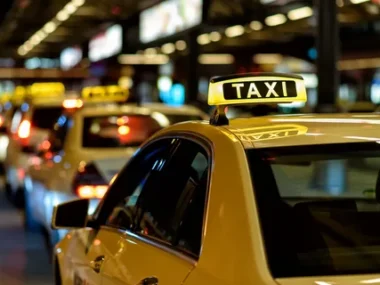If you’re a talented dressmaker or dress designer with dreams of bringing your creativity to the United States, you’re in luck. The fashion industry in the USA is vibrant and diverse, offering ample opportunities for skilled professionals from around the globe.
This article will guide you through the ins and outs of securing a dressmaker or dress designer job in the USA with visa sponsorship, from understanding the job market to navigating the visa process and exploring career prospects.
Understanding the Fashion Industry in the USA
The fashion industry in the USA is a dynamic and influential sector, with major hubs in cities like New York, Los Angeles, and Miami. These cities are renowned for their fashion scenes, hosting numerous design studios, fashion houses, and events that set global trends.
The industry is diverse, encompassing everything from high couture to everyday wear, and there’s a growing demand for innovative and skilled dressmakers and dress designers.
The role of a dressmaker or dress designer involves creating garments that blend creativity with functionality. Whether you’re designing custom couture, ready-to-wear collections, or special event dresses, your work contributes to the ever-evolving landscape of fashion. This makes the USA an exciting place for those passionate about fashion and design.
Visa Sponsorship Options for Dressmakers and Dress Designers
For foreign nationals seeking to work as dressmakers or dress designers in the USA, obtaining a visa is a crucial step. Several visa options are available, each catering to different needs and circumstances.
1. H-1B Visa: Specialty Occupations
The H-1B visa is one of the most common pathways for skilled professionals, including dressmakers and dress designers. This visa is designed for individuals working in specialty occupations that require a bachelor’s degree or higher. To qualify, you need a job offer from a U.S. employer willing to sponsor you. The employer must demonstrate that your role is a specialty occupation and that you possess the required qualifications.
2. O-1 Visa: Individuals with Extraordinary Ability
The O-1 visa is for individuals with extraordinary ability in their field, including fashion design. If you have a notable track record of accomplishments, awards, or significant recognition in the fashion industry, the O-1 visa might be a suitable option. This visa requires proof of your extraordinary ability, such as press coverage, awards, or high-profile clients.
3. L-1 Visa: Intracompany Transferee
If you are already working for a fashion company outside the USA and are looking to transfer to a U.S. office, the L-1 visa may be applicable. This visa is for individuals who are being transferred within a company and requires that you have worked for the company for at least one year in a managerial, executive, or specialized knowledge capacity.
4. J-1 Visa: Exchange Visitor Program
For those seeking training or internships in fashion design, the J-1 visa offers an opportunity to gain experience in the USA. This visa is typically used for exchange programs, including internships and fellowships, and requires a sponsoring organization to facilitate your stay.
Finding Employers Who Offer Visa Sponsorship
Securing a job with visa sponsorship can be competitive, so it’s essential to target your job search effectively. Here are some strategies to help you find employers willing to sponsor your visa:
1. Research Fashion Companies
Start by identifying fashion companies and design studios in your target cities. Large fashion houses, boutique studios, and even emerging designers may be open to hiring international talent. Companies involved in high fashion, couture, or innovative design are often more willing to sponsor visas.
2. Network Within the Industry
Networking is key in the fashion industry. Attend fashion shows, industry events, and workshops to connect with professionals and potential employers. Building relationships with industry insiders can lead to job opportunities and valuable referrals.
3. Utilize Job Portals and Recruitment Agencies
Job portals like Indeed, Glassdoor, and LinkedIn often list positions that offer visa sponsorship. Additionally, recruitment agencies specializing in the fashion industry can assist in finding roles that match your skills and visa requirements.
4. Leverage Online Platforms and Portfolio Sites
Create a compelling online portfolio showcasing your designs and work. Platforms like Behance, Dribbble, and personal websites can help attract attention from potential employers. Ensure your portfolio highlights your best work and includes any notable achievements or collaborations.
Typical Responsibilities of a Dressmaker or Dress Designer in the USA
As a dressmaker or dress designer in the USA, your responsibilities will vary depending on the specific role and employer. However, some common tasks include:
1. Designing and Creating Garments
Your primary role involves designing and creating clothing. This includes sketching designs, selecting fabrics, and constructing garments. You’ll need to balance creativity with practical considerations, such as fit and functionality.
2. Collaborating with Clients and Teams
Many dressmakers and designers work closely with clients to understand their needs and preferences. You’ll also collaborate with other fashion professionals, such as pattern makers, seamstresses, and production teams, to bring your designs to life.
3. Staying Updated with Fashion Trends
The fashion industry is fast-paced and constantly evolving. Staying updated with current trends, materials, and techniques is crucial to creating relevant and appealing designs.
4. Managing Production and Quality Control
In addition to designing, you may be involved in overseeing the production process and ensuring that garments meet quality standards. This includes managing deadlines, coordinating with manufacturers, and performing quality checks.
Salary Range for Dressmakers and Dress Designers in the USA
The salary for dressmakers and dress designers in the USA can vary widely based on factors such as experience, location, and the type of employer. On average:
1. Entry-Level Positions
Entry-level dressmakers and designers can expect to earn between $40,000 and $60,000 per year. These roles typically involve assisting more experienced designers and gaining hands-on experience.
2. Mid-Level Positions
With a few years of experience, salaries can range from $60,000 to $90,000 per year. Mid-level designers often take on more significant projects, manage client relationships, and may oversee a team of assistants.
3. Senior-Level and Specialized Roles
Senior designers or those with specialized skills can earn between $90,000 and $150,000 or more annually. High-profile positions, such as lead designers at renowned fashion houses or successful freelance designers, can command even higher salaries.
4. Geographic Variation
Salaries can also vary based on location. Major fashion hubs like New York City and Los Angeles tend to offer higher salaries due to the high cost of living and competitive job market. In contrast, salaries in smaller cities or regions with less fashion industry presence may be lower.
Opportunities for Career Growth in Fashion Design
The fashion industry offers numerous opportunities for career growth. Here are some pathways you might consider:
1. Advancing to Senior Design Roles
With experience, you can move into senior design positions, where you’ll have greater creative control and responsibility. This may include leading design teams, managing larger projects, or working on high-profile collections.
2. Specializing in a Niche Area
Specializing in a particular area of fashion design, such as bridal wear, sportswear, or sustainable fashion, can open up new career opportunities and allow you to become an expert in your chosen niche.
3. Starting Your Own Fashion Line
For entrepreneurial spirits, starting your own fashion line or brand is a viable option. This path involves significant planning and investment but can lead to greater creative freedom and potential financial rewards.
4. Exploring Related Careers
The skills gained as a dressmaker or dress designer are transferable to other careers in the fashion industry, such as fashion merchandising, styling, or costume design. Exploring these related fields can broaden your career prospects.
Challenges Faced by Foreign Dressmakers and Designers
Working as a foreign dressmaker or dress designer in the USA comes with its own set of challenges:
1. Visa and Immigration Hurdles
Securing visa sponsorship can be a complex and time-consuming process. Ensuring you meet all visa requirements and navigating the application process can be challenging, especially with changing immigration policies.
2. Adapting to a New Market
Understanding the preferences and trends of the American fashion market may require adjustment. What works in one country may not necessarily translate to success in another, so being adaptable and willing to learn is crucial.
3. Competition in the Fashion Industry
The fashion industry is highly competitive, with many talented designers vying for similar roles. Standing out requires a combination of skill, creativity, and effective self-promotion.
4. Navigating Cultural Differences
Adjusting to cultural differences in the workplace and everyday life can be challenging. Building strong relationships with colleagues and clients and being open to learning about American culture can help ease this transition.
How to Apply for Dressmaker/Dress Designer Jobs with Visa Sponsorship
If you’re ready to pursue a dressmaker or dress designer job in the USA, follow these steps to increase your chances of success:
1. Research and Identify Potential Employers
Begin by researching fashion companies, design studios, and boutiques that are known for hiring international talent. Look for employers who have previously sponsored visas or who operate in fashion hubs with a demand for skilled designers.
2. Prepare a Strong Portfolio
Your portfolio is your chance to showcase your best work and demonstrate your skills and creativity. Include high-quality images of your designs, sketches, and any notable achievements or collaborations. A well-presented portfolio can make a significant impact on potential employers.
3. Tailor Your Resume and Cover Letter
Customize your resume and cover letter to highlight your relevant experience and explain why you’re interested in working in the USA. Emphasize any international experience or unique skills that set you apart from other candidates.
4. Apply to Job Listings
Submit your application to job listings that specify visa sponsorship availability. Be proactive in reaching out to potential employers and networking within the industry. Persistence and a proactive approach can improve your chances of securing a role.
5. Prepare for Interviews
If you get an interview, be prepared to discuss not only your design skills but also how you would adapt to working in the USA. Research common interview questions and practice your responses, focusing on how you can contribute to the company’s success.
6. Understand the Visa Process
Once you receive a job offer, work closely with your employer to understand the visa application process. Ensure all required documents are in order and be prepared for any additional steps or interviews that may be necessary.
7. Seek Professional Advice
Consider consulting with an immigration lawyer or visa consultant who specializes in employment-based visas. They can provide guidance on navigating the visa process and help ensure that everything is handled correctly.
Conclusion
Securing a dressmaker or dress designer job in the USA with visa sponsorship can be a rewarding endeavor for those passionate about fashion.
With a thriving industry, numerous opportunities for career growth, and various visa options available, the USA offers a promising environment for talented international designers.
From understanding the fashion landscape and finding the right employer to navigating the visa process and exploring career opportunities, this guide provides a comprehensive overview to help you embark on your journey.
Whether you aim to contribute to a major fashion house, start your own line, or gain valuable experience in a new market, the possibilities are endless.
Remember, the key to success in pursuing a job in the USA is preparation and persistence. By leveraging your skills, building a strong portfolio, and effectively navigating the visa process, you can turn your dreams into reality and make a significant impact in the vibrant world of American fashion.


